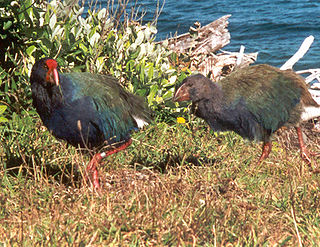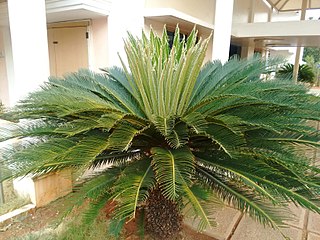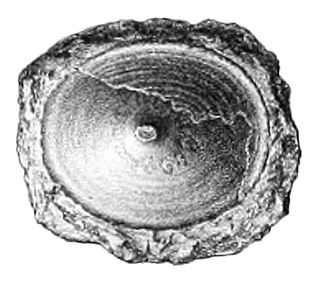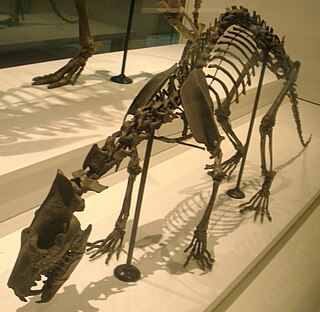
Conodonts are an extinct group of eel-looking agnathan (jawless) vertebrates, classified in the class Conodonta. For many years, they were known only from fossils of their spiky oral elements, which are usually found in isolation and are now called conodont elements, while knowledge about soft tissues remains limited. A resilient group of prehistoric fish, conodonts existed in the world's oceans for over 300 million years, from the Cambrian to the beginning of the Jurassic. Due to their cosmopolitan distribution, conodont elements are widely used as index fossils, fossils used to define and identify geological periods.

Bolodon is a genus of extinct mammal from the Lower Cretaceous of Europe and North America. It was a member of the extinct order of Multituberculata and belongs to the suborder Plagiaulacida and family Plagiaulacidae.

In paleontology, a Lazarus taxon is a taxon that disappears for one or more periods from the fossil record, only to appear again later. Likewise in conservation biology and ecology, it can refer to species or populations that were thought to be extinct, and are rediscovered. The term Lazarus taxon was coined by Karl W. Flessa and David Jablonski in 1983 and was then expanded by Jablonski in 1986. Paul Wignall and Michael Benton defined Lazarus taxa as, "At times of biotic crisis many taxa go extinct, but others only temporarily disappeared from the fossil record, often for intervals measured in millions of years, before reappearing unchanged". Earlier work also supports the concept though without using the name Lazarus taxon, like work by Christopher R. C. Paul.

Cycas is a genus of cycad, and the only genus in the family Cycadaceae with all other genera of cycad being divided between the Stangeriaceae and Zamiaceae families. Cycas circinalis, a species endemic to India, was the first cycad species to be described in western literature, and is the type species of the genus.

Marchantiales is an order of thallose liverworts that includes species like Marchantia polymorpha, a widespread plant often found beside rivers, and Lunularia cruciata, a common and often troublesome weed in moist, temperate gardens and greenhouses.

Palaeophonus is one of the oldest known genera of scorpions.

Lophospiridae is an extinct taxonomic family of sea snails, marine gastropod molluscs.
†Orthonychiidae is an extinct taxonomic family of fossil sea snails, marine, gastropod mollusks in the clade Cyrtoneritimorpha.

Pilina is an extinct genus of paleozoic monoplacophorans in the family Tryblidiidae.

Helcionopsis is an extinct genus of paleozoic monoplacophoran in the family Tryblidiidae.

Pilina solarium is an extinct species of a paleozoic Silurian monoplacophoran. It was first named as Palaeacmaea solarium and described by Gustaf Lindström from Silurian of Gotland in Sweden in 1884.

Pleurotomaria is an extinct genus of sea snails, marine gastropod molluscs in the family Pleurotomariidae.
Frodospira cochleata is a species of extinct sea snail in the family Lophospiridae. Fossil specimens from 422.9 and 421.3 million years ago have been found in Sweden at Grogarnsberget, Hemse, and Sandarve kulle, in a hill about a kilometer north of Fardhem Church. A species of epifaunal filter feeder, it had a slender, turriculate shell consisting of twelve to thirteen whorls.
Events from the year 1938 in Sweden
Paracordylodus is an extinct genus of conodonts in the clade Prioniodontida, also known as the "complex conodonts". The species P. gracilis has been recovered from the chert of the Narooma Terrane, a geological structural region on the south coast of New South Wales, Australia.
Proconodontus is an extinct genus of conodonts in the monotypic family Proconodontidae. The specimens are found in Cambrian formations.
Microzarkodina is an extinct genus of conodonts mainly from the Middle Ordovician of Baltoscandia. The Microzarkodina apparatus probably consisted of 15 or 17 elements: four P, two or four M and nine S elements. The S elements include different Sa, Sb1, Sb2, and Sc element types.

Sinopidae is an extinct family of predatory placental mammals from extinct order Hyaenodonta. Fossil remains of these mammals are known from early to middle Eocene deposits in North America, Europe and Asia.

Proviverrinae is an extinct subfamily of placental mammals within the extinct order Hyaenodonta. Fossil remains of these mammals are known from early to late Eocene deposits in Europe.












